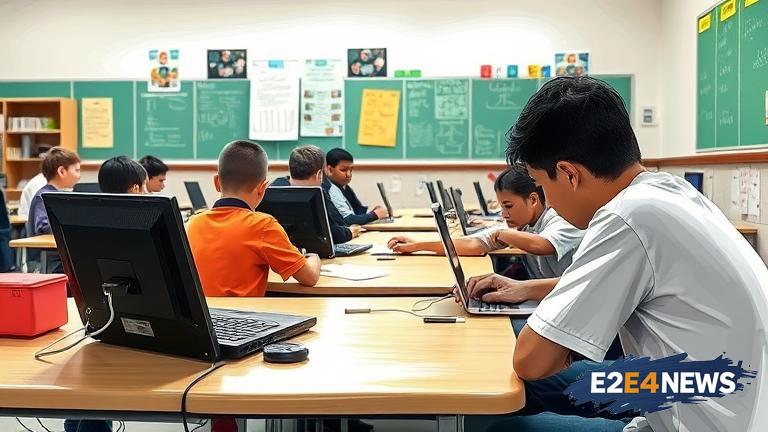School districts across the United States have recently introduced a new policy concerning the use of personal electronics by students during school hours. The policy, which varies from district to district, aims to reduce distractions and promote a more focused learning environment. According to school administrators, the policy is designed to help students stay on task and avoid the potential negative effects of excessive screen time. The new policy prohibits students from using their personal electronics, such as smartphones, tablets, and smartwatches, during class time, unless specifically permitted by the teacher. Some districts have also implemented rules regarding the use of headphones and earbuds during school hours. The policy is intended to encourage students to engage more fully with the learning material and to develop better study habits. By minimizing distractions, school officials hope to improve student outcomes and increase academic achievement. The policy has been met with mixed reactions from students, parents, and teachers, with some expressing concerns about the potential impact on student productivity and creativity. However, many educators believe that the policy is necessary to help students develop essential skills, such as critical thinking and problem-solving. The policy is also seen as a way to promote digital citizenship and to help students understand the importance of responsible technology use. In addition to reducing distractions, the policy is intended to help students avoid the potential risks associated with excessive screen time, such as eye strain, headaches, and decreased attention span. School districts have also implemented measures to ensure that students have access to technology when it is needed for educational purposes. For example, some districts have provided students with school-issued devices, such as laptops or tablets, which can be used for specific assignments and projects. The policy has also led to an increased focus on digital literacy and online safety, with many schools incorporating these topics into their curriculum. By teaching students about the potential risks and benefits of technology, educators hope to empower them to make informed decisions about their technology use. The new policy has also raised questions about the role of technology in education and the potential impact on student learning outcomes. Some experts believe that technology can be a powerful tool for learning, while others argue that it can be a significant distraction. As school districts continue to navigate the complexities of technology use in the classroom, it is likely that the policy will evolve and change over time. In the meantime, educators and administrators will be closely monitoring the impact of the policy on student learning outcomes and making adjustments as needed. The policy is a significant step towards creating a more focused and productive learning environment, and it will be interesting to see how it plays out in the coming months and years. Overall, the new policy on personal electronics is an important development in the ongoing conversation about technology use in schools, and it highlights the need for educators and administrators to stay up-to-date with the latest research and best practices in this area. By working together, schools can create a learning environment that is both supportive and challenging, and that prepares students for success in the digital age. The policy is also a reminder that technology is a tool, and that it should be used in a way that supports learning and promotes academic achievement. As schools continue to evolve and adapt to the changing needs of students, it is likely that the policy will play an important role in shaping the future of education. In conclusion, the new policy on personal electronics is a significant development in the world of education, and it has the potential to make a positive impact on student learning outcomes. By reducing distractions and promoting a more focused learning environment, the policy can help students achieve their full potential and succeed in the digital age.
Wed. Nov 5th, 2025
